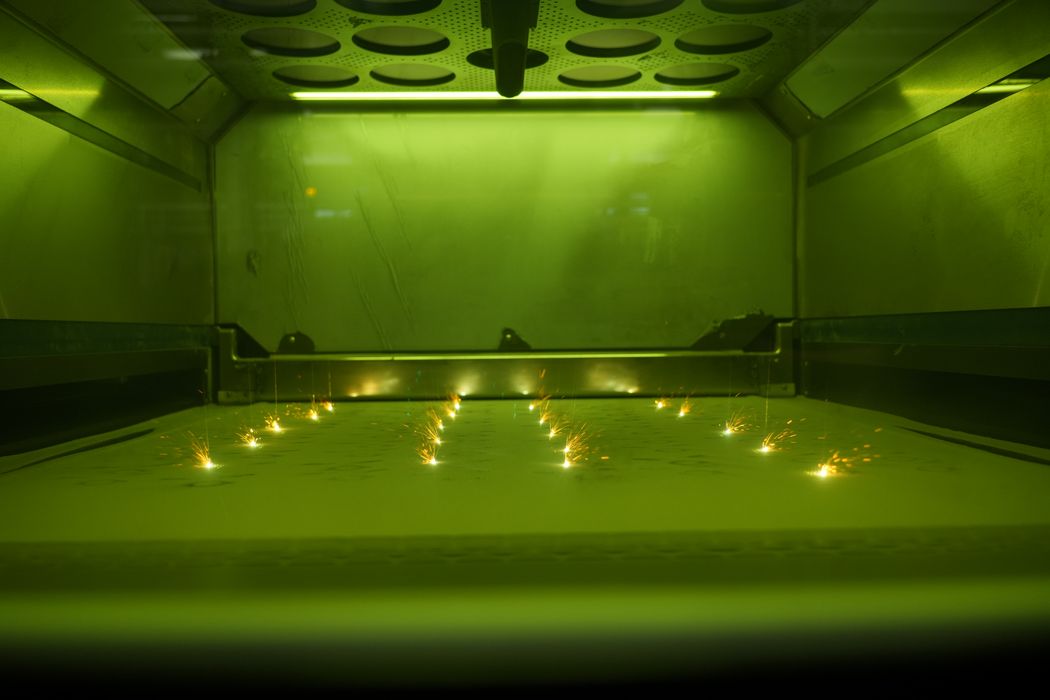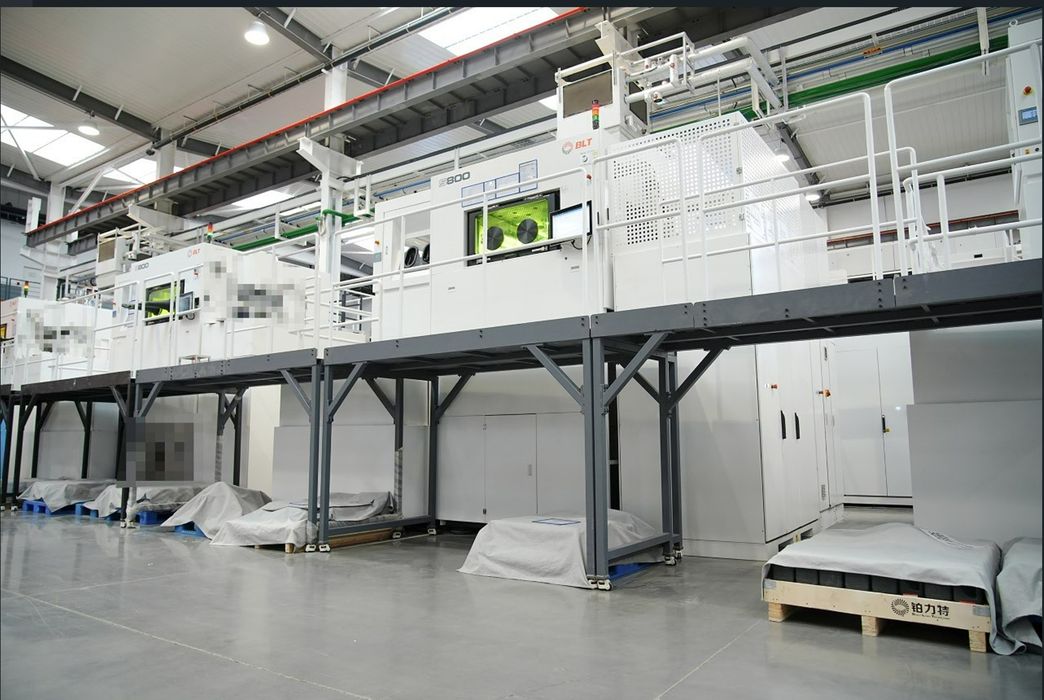
Bright Laser Technologies has introduced a massive metal 3D printer that uses an astonishing 20 lasers.
You may not have heard of “BLT”, but they are one of the largest companies in the space. Founded only a dozen years ago, the company now has almost 1500 staff, of which almost 30% are dedicated to research and development. They have offices all across China, their home country, as well as additional offices in Europe and North America. Currently I count their product portfolio to have around 16 different industrial additive systems, with most being dedicated to specific industries.
The big news is their latest industrial 3D printer, the BLT-S800. This is a production machine with build volume of 800 x 800 x 600 mm, and uses the LPBF process.
But the difference here is that the BLT-S800 uses put to 20 lasers simultaneously inside the build chamber.
Why so many lasers? It’s all about speed.
LPBF 3D printers must tediously trace each and every voxel of the part, and that can take considerable time. Some 3D printer manufacturers attempt to get around the speed problem by simply adding more lasers. For example, a machine with two lasers can print objects almost twice as fast as with a single laser. The speed up isn’t quite linear as there are some complications when operating simultaneously, but nevertheless there can be substantial decreases in build time.

Manufacturers have been doing this for a while. First two laser, then four. Recently SLM Solutions announced a massive device with an incredible twelve lasers. However, no one is now even close to BLT’s 20 lasers.
Those multiple lasers will enable speedy printing on the BLT-S800, but that’s not all that speeds up operations.
The device also has a unique powder recoating system that dynamically adjusts to part geometry and speeds up recoating by around 30%. That’s a substantial gain in speed.
While the BLT-S800 has increased speed due to the additional lasers and other features, one might wonder why other manufacturers don’t add many additional lasers to their equipment.
The answer is that it’s hard to do so. Each laser produces an amount of smoke and spatter, which can interfere with the operation of other lasers: the beam strength is decreased if it has to travel through thick smoke.
That’s precisely what should be avoided because it would result in parts with inconsistent strength. That’s unacceptable for production parts.
Here it seems that BLT has devised a unique smoke dispersion system with a sophisticated air flow optimization system. This allows the lasers to work simultaneously to a greater degree than would otherwise be possible.
The increased speed is vitally important for production operations: if a machine prints twice as fast, it’s like having two machines. The 20-laser BLT-S800 will certainly provide a far more efficient footprint in factories making use of this unusual device.
